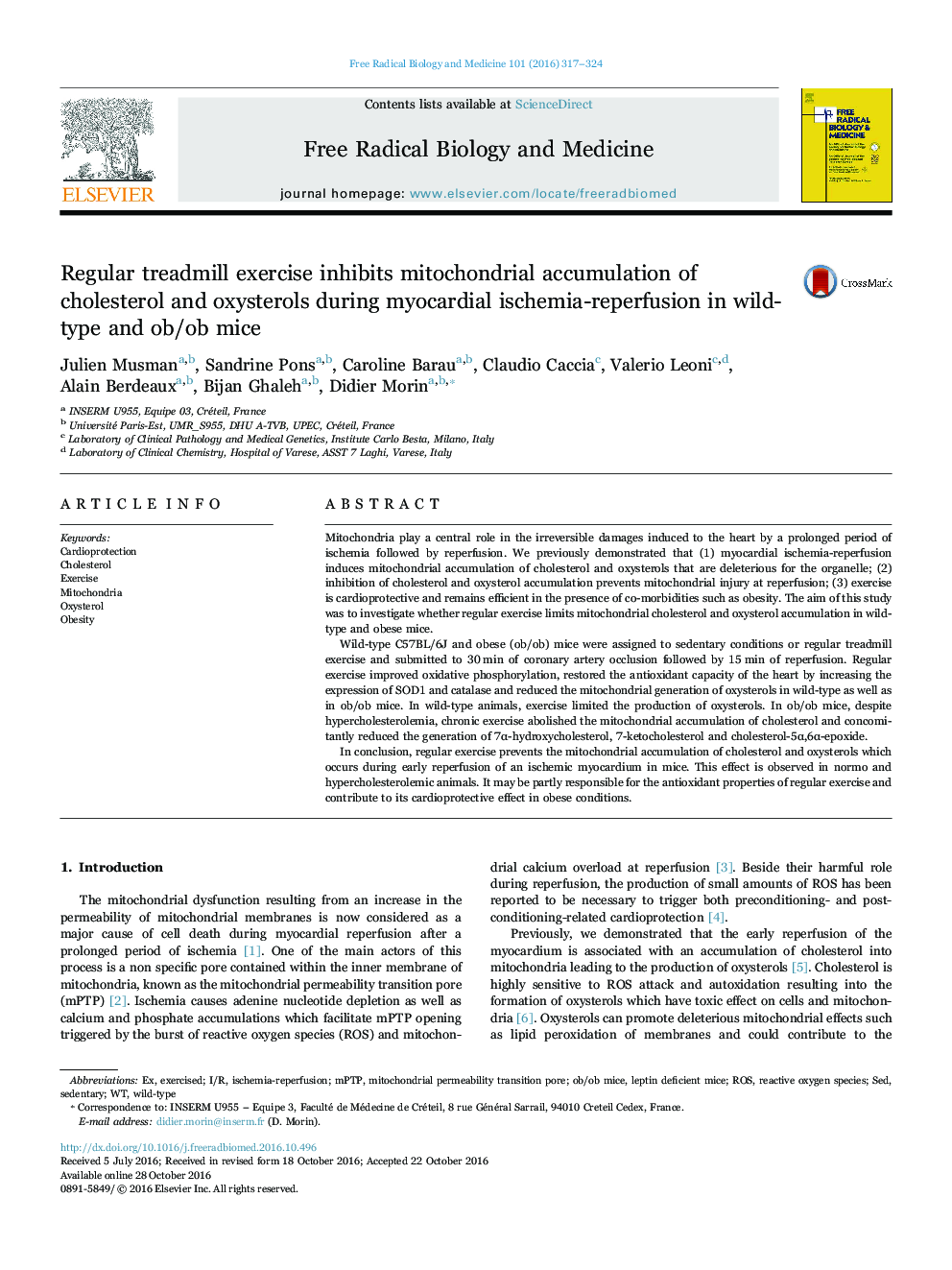| Article ID | Journal | Published Year | Pages | File Type |
|---|---|---|---|---|
| 5501857 | Free Radical Biology and Medicine | 2016 | 8 Pages |
â¢Cardiac I/R increases mitochondrial cholesterol in wild-type and obese mice.â¢The accumulation of mitochondrial cholesterol generates deleterious oxysterols.â¢Physical exercise restores cardiac antioxidant capacity and oxidative phosphorylation.â¢Physical exercise limits cholesterol and oxysterol accumulation induced by I/R.â¢The reduction in sterol accumulation contributes to the protective effect of exercise.
Mitochondria play a central role in the irreversible damages induced to the heart by a prolonged period of ischemia followed by reperfusion. We previously demonstrated that (1) myocardial ischemia-reperfusion induces mitochondrial accumulation of cholesterol and oxysterols that are deleterious for the organelle; (2) inhibition of cholesterol and oxysterol accumulation prevents mitochondrial injury at reperfusion; (3) exercise is cardioprotective and remains efficient in the presence of co-morbidities such as obesity. The aim of this study was to investigate whether regular exercise limits mitochondrial cholesterol and oxysterol accumulation in wild-type and obese mice.Wild-type C57BL/6J and obese (ob/ob) mice were assigned to sedentary conditions or regular treadmill exercise and submitted to 30 min of coronary artery occlusion followed by 15 min of reperfusion. Regular exercise improved oxidative phosphorylation, restored the antioxidant capacity of the heart by increasing the expression of SOD1 and catalase and reduced the mitochondrial generation of oxysterols in wild-type as well as in ob/ob mice. In wild-type animals, exercise limited the production of oxysterols. In ob/ob mice, despite hypercholesterolemia, chronic exercise abolished the mitochondrial accumulation of cholesterol and concomitantly reduced the generation of 7α-hydroxycholesterol, 7-ketocholesterol and cholesterol-5α,6α-epoxide.In conclusion, regular exercise prevents the mitochondrial accumulation of cholesterol and oxysterols which occurs during early reperfusion of an ischemic myocardium in mice. This effect is observed in normo and hypercholesterolemic animals. It may be partly responsible for the antioxidant properties of regular exercise and contribute to its cardioprotective effect in obese conditions.
Graphical abstractDownload high-res image (289KB)Download full-size image
